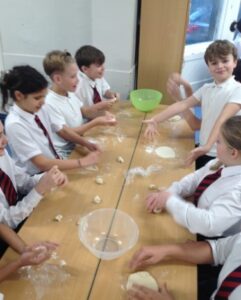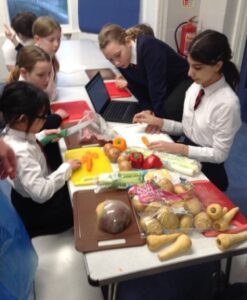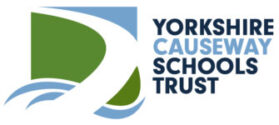Subject Leader
The subject leader for Design Technology is Miss Wilson.

They can be contacted by emailing admin@stpeters.ycway.uk using the subject title FAO of followed by the name of the subject leader. Emails typically receive a reply within 2-3 working days. Please note most of our subject leaders have a full-time teaching commitment.
With oversight and support from our Senior Leadership team subject leaders oversee and monitor the intent, implementation and impact of their subject.
Curriculum Development
Intent – The ambition and principles of our curriculum for our children. The curriculum content we expect children to learn. What we expect children to know.
Implementation – How the intentions are realised. The sequence and strategies used to ensure children know and remember more. There is additional information on our curriculum page.
Impact – How we check and see if children know what we expect them to and how we help them further if needed. How knowledge and skills learnt improved and enriches their lives socially, emotionally, spiritually as well as academically.
Subject Rationale
Design and technology at St. Peter’s is an inspiring, rigorous and practical subject, whereby children design and make products that solve real and relevant problems within a variety of contexts, considering their own and others’ needs, wants and values. Our curriculum is based on a scheme which was developed by experts and provides and deep coverage of the National Curriculum for Design Technology.
Design and technology supports children in becoming secure, and fluent in the identified agreed core knowledge and skills in design and technology. Fluency and security in core knowledge allows children to explore concepts in greater depth exploring and evaluating concepts and ideas enabling children to articulate informed responses about developing their capability, combining their designing and making skills with knowledge and understanding in order to create quality products.
At St Peter’s the journey to becoming design and technologically literate begins in the Early Years. Our youngest children learn about design and technology within the EYFS area of learning known as ‘Expressive Arts and Designs’ and ‘Physical Development.’ . These will be led by the children’s interest and the ‘here and how’ gained from the observation, assessment and planning cycle. Examples of the themes incorporated include designing, building and painting a dinosaur using junk modelling, in the Dinosaurs topic.
By the time children reach the end of Year Six they will be securely design and technologically literate and working in line with age related national expectations. They will also be able to use design and technological thinking skills such as investigating, considering, reflecting and reviewing the design and technology world. When conducting design and technological research, they will select from a range of design and technological sources, using vocabulary confidently and accurately. They will be able to analyse and evaluate the sources of information they use.
Related Development Matters Learning:
Expressive Arts and Design:
Physical Development:
Full Subject Rationale Design and Technology 2022
Subject Sequence and Knowledge Progression
Knowledge Organisers Examples
To help children secure the intended knowledge we are developing a range of child friendly knowledge organisers to support our curriculum implementation. Some examples are attached below.
DT Knowledge Organiser Yr1-2 Weaving
Knowledge Organiser – Year 5-6 Leavers Gears and Pulleys
Impact Examples
Year 1 and 2 have a “Balanced diet” unit where they learned about the 5 different food groups and making healthy choices. They used this knowledge to design a healthy fruit kebab. This enables children to make healthier choices in their own life and develop their understanding of what different food groups provide our bodies.
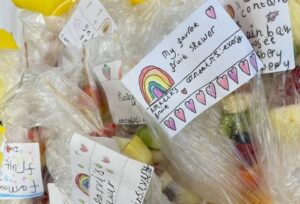
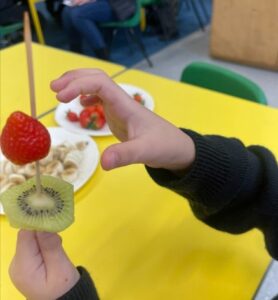
In Year 3 and 4, they were learning about “Eating Seasonally” where they learned about what produce is grown in the different seasons in the UK and the benefit of this. The also learned to design a seasonal soup and how to peel and chop seasonal vegetables safely. This enables to children to develop their understanding of how eating seasonally can have an impact on the environment and develop their awareness of how to use correct equipment when following a recipe.
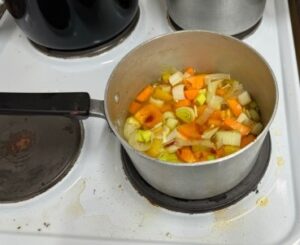
In the “Come Dine with me” unit, Year 5 and 6 designed a 3-course meal based on research and thought about the flavours that might go well together. They also developed their culinary skills and understanding of the important of hygiene when preparing food. This enables the children to develop their ability to make a starter, main course and dessert from scratch using prior knowledge and their own ideas.
